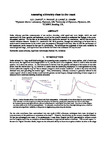Assessing altimetry close to the coast
| dc.contributor.author | Quartly, GD | |
| dc.contributor.author | Nencioli, F | |
| dc.contributor.author | Conley, Daniel | |
| dc.contributor.author | Abdalla, S | |
| dc.date.accessioned | 2018-01-11T22:07:24Z | |
| dc.date.available | 2018-01-11T22:07:24Z | |
| dc.date.issued | 2017-11 | |
| dc.identifier.isbn | 978-1-5106-1308-9 | |
| dc.identifier.issn | 0277-786X | |
| dc.identifier.issn | 1996-756X | |
| dc.identifier.uri | http://hdl.handle.net/10026.1/10563 | |
| dc.description | File replaced (incorrect version) on 01/08/2022 by KT (LDS). | |
| dc.description.abstract |
Radar altimetry provides measurements of sea surface elevation, wind speed and wave height, which are used operationally by many agencies and businesses, as well as for scientific research to understand the changes in the oceanatmosphere interface. For the data to be trustworthy they need to be assessed for consistency, and for bias relative to various validation datasets. Sentinel-3A, launched in Feb. 2016, promises, through new technology, to be better able to retrieve useful measurements in the coastal zone; the purpose of this paper is develop ideas on how the performance of this instrument can be assessed in that specific environment. We investigate the magnitude of short-term variability in wave height and range, and explain how two validation facilities in the southwest UK may be used. | |
| dc.format.extent | 104220t- | |
| dc.language.iso | en | |
| dc.publisher | SPIE | |
| dc.subject | coastal altimetry | |
| dc.subject | Sentinel-3A | |
| dc.subject | significant wave height | |
| dc.subject | validation | |
| dc.title | Assessing altimetry close to the coast | |
| dc.type | conference | |
| dc.type | Conference Proceeding | |
| plymouth.author-url | http://gateway.webofknowledge.com/gateway/Gateway.cgi?GWVersion=2&SrcApp=PARTNER_APP&SrcAuth=LinksAMR&KeyUT=WOS:000418795400020&DestLinkType=FullRecord&DestApp=ALL_WOS&UsrCustomerID=11bb513d99f797142bcfeffcc58ea008 | |
| plymouth.date-start | 2017-09-11 | |
| plymouth.date-finish | 2017-09-14 | |
| plymouth.volume | 10422 | |
| plymouth.conference-name | Remote Sensing of the Ocean, Sea Ice, Coastal Waters, and Large Water Regions 2017 | |
| plymouth.publication-status | Published | |
| plymouth.journal | REMOTE SENSING OF THE OCEAN, SEA ICE, COASTAL WATERS, AND LARGE WATER REGIONS 2017 | |
| dc.identifier.doi | 10.1117/12.2277591 | |
| plymouth.organisational-group | /Plymouth | |
| plymouth.organisational-group | /Plymouth/Faculty of Science and Engineering | |
| plymouth.organisational-group | /Plymouth/PRIMaRE Publications | |
| plymouth.organisational-group | /Plymouth/REF 2021 Researchers by UoA | |
| plymouth.organisational-group | /Plymouth/REF 2021 Researchers by UoA/UoA07 Earth Systems and Environmental Sciences | |
| plymouth.organisational-group | /Plymouth/Research Groups | |
| plymouth.organisational-group | /Plymouth/Research Groups/Marine Institute | |
| plymouth.organisational-group | /Plymouth/Users by role | |
| plymouth.organisational-group | /Plymouth/Users by role/Academics | |
| dcterms.dateAccepted | 2017-10-01 | |
| dc.identifier.eissn | 1996-756X | |
| dc.rights.embargoperiod | Not known | |
| rioxxterms.versionofrecord | 10.1117/12.2277591 | |
| rioxxterms.licenseref.uri | http://www.rioxx.net/licenses/all-rights-reserved | |
| rioxxterms.licenseref.startdate | 2017-11 | |
| rioxxterms.type | Conference Paper/Proceeding/Abstract |


